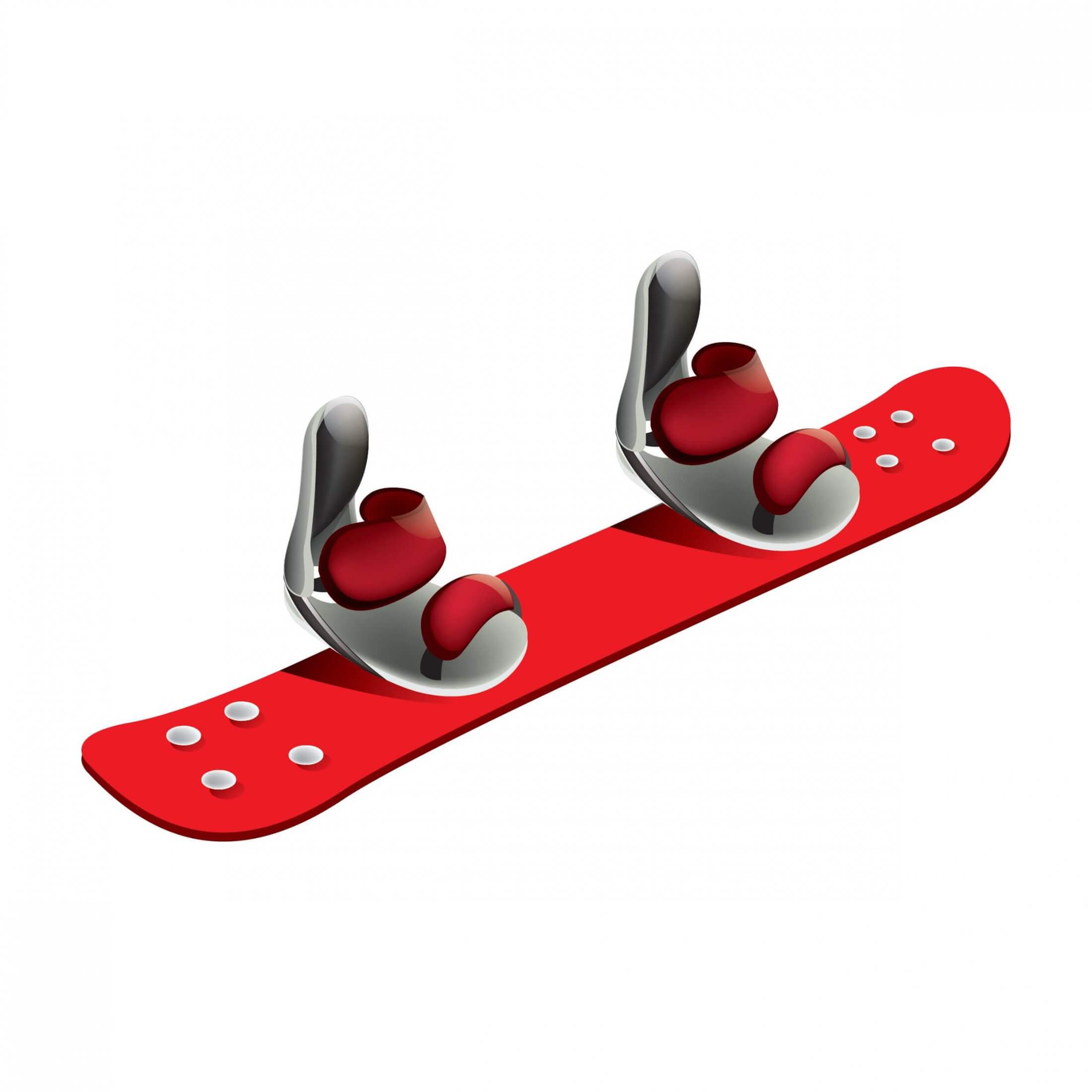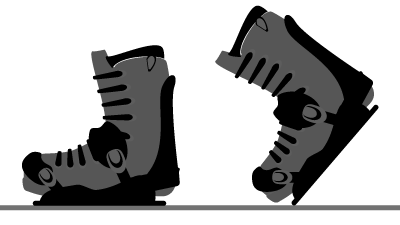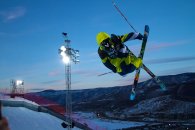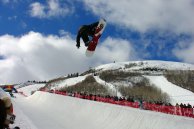
Choosing a snowboard can be a tedious task for those that are new. Knowing exactly what to look for can go a long way in ensuring you have the best experience. Check out our Buyers Guide For Snowboarders to see what is right for you!
The Basics Of A Snowboard
Most experts of snowboarding or people that have a degree of experience in the sport most likely already know what to look for when scouting out a new snowboard. For beginners, it is useful to read a detailed guide that will help further understand just what to look for.
Snowboard Length
The length of the board is calculated by measuring one end of the tip all the way to the tail in centimetres. Snowboards come in various lengths, and picking out a specific board depends on a few factors such as the snowboarder’s height, weight, skill level, and what purpose they are using the board for. A freestyle board will be much different than one that is being used for racing.
Effective Edge Of The Snowboard
The effective edge is measured from what is known as the contact point on the front of the snowboard to the contact point at the back of the snowboard. It can be thought of as how much of the snowboard will be in contact with the snow when you make turns.
Sidecut Characteristics
The curve of the snowboard’s edge is known as the sidecut and this needs to be known to determine how sharply the board will turn. If you are seeking a snowboard that makes quick and tight turns, then you will want a deeper sidecut. If you don’t need a board that turns sharply, then this is known as a shallow sidecut. The radius of the sidecut can be thought of as the path that the snowboard will take on its edge. Some factors that influence the sidecut are how much the snowboard is being flexed, the condition of the hill being boarded on, and the camber of the board. There are four different types of sidecuts.
Radial Sidecut
The radial sidecut will have a fairly smooth initiation and ability to exit into turns and it will still feel the same because of its shape. It is based on a circle, and if you followed its sidecut radius, it would form a circle. The radial sidecut is mostly used in twin boards.

Progressive Sidecut
The progressive sidecut is known to have a lengthy curve in the front of the sidecut with a tighter curve in the back. The initiation on a progressive sidecut board is smooth and has a quick drive on the exit.

Magne Traction Sidecut
Lib Tech, Gnu, and Roxy boards all have the Magne Traction sidecut and it has a total of 7 contact points with the biggest one being between the feet. Towards the nose and tail of the board, the points gradually get smaller. The purpose of this is to add traction, kind of like how a serrated saw is more effecting at cutting a tree down than a regular one.

Stage Sidecut
The stage sidecut is composed of 3 to 5 straight lines. The effect this has is of increased grip, strong turning power, and a very seamless initiation and exit.

Snowboarder Ability Level
Many things need to be taken into consideration when choosing the right snowboard. Ability level is a big one, and as you get more experienced on the hills, you will naturally begin to want different characteristics and properties out of your board. If you are tired of going slowly down the hill, you will most likely want to gravitate to a stiffer board for more speed. The right board should be aligned with the level of ability the snowboarder has, and this will result in an overall more enjoyable experience. A beginner will want a board that eases them into learning the basics such as the sideslip and link turns, an intermediate level snowboarder will be able to get down most runs in one piece, and an advanced snowboarder will be constantly advancing their skills every time on the hill.
Flex Of The Snowboard
Board flex is also an important part of the snowboard and reflects your ability level and what type of hills you are riding. Stiffer snowboards are influenced by the materials they are built with, just the way softer snowboards are. The symmetrical flex pattern that a snowboard has gives it the ability to flex it the same in the nose and tail. An asymmetrical pattern gives the board the ability to be softer at the nose and stiffer at the tail. Each desired flex pattern on the snowboard is chosen for how they want to ride. Snowboarders use their weight to flex the edge of the snowboard around every turn that they take. A softer snowboard will be easier to flex into a turn’s radius, and a stiffer snowboard is tougher to flex and will, as a result, require more weight that the snowboarder can create speed out of. It can be thought of as similar to windshield wipers.
A wiper with a softer flex will still have contact with the whole window, but will still have some loose points. Most beginners will prefer to use softer snowboards because of how forgiving they are. A softer snowboard lends an easier hand in initiating turns. But sometimes if a board is too soft, it may cause the snowboarder to accidentally over flex and result in washing out. Using a stiffer snowboard will be more responsive and it requires the rider to manage the momentum from their body to flex the board. If the board is too stiff though, it can sometimes become hard to put on edge.
What Is Board Camber?
Board camber refers to how a snowboard is bent from its tip to its tail and it will alter how it controls on the snow. For beginner snowboarders, the hybrid cambers and reverse cambers are the way to go because they will lower the chances of the edge catching by lifting the contacts point on the board at the right times.
Positive Camber
Snowboards have traditionally been made with positive cambers. It is considered to be the most aggressive type of camber and creates the most edge hold out of them all. It bows the board up between the bindings and will produce a type of springy effect to give some more responsiveness to the board. Professional snowboarders prefer a positive camber.

Reverse Camber
With reverse camber, the board bows down like a banana shape that lifts up the tail which makes the board a lot more forgiving for the user. These boards are easier to learn because not much effort is required to turn at lower speeds.

Hybrid Camber
Hybrid camber is a mix of positive and reverse camber. This gives the board the combined ability of a softer feel and easier to put it on its edge without losing any stability under the feet, even at high speeds.

Flat Camber
Flat camber is also known as zero camber because there really is no camber at all. The snowboard is just flat and it gives them a looser feel, similar to reverse camber ones, and they stay fairly stable at high speeds.

Powder Camber
Powder camber has the main purpose of being used for riding in powdery snow. The hardest part of riding in powder is keeping the nose of the board above the snow, so these boards are designed almost like a surfboard that provides a type of floaty feeling on the snow which makes them fairly poor for use in hard-packed snow.

Types Of Snowboards
Snowboards come in all sorts of different shapes and sizes. Altering a snowboard’s shape will also change how it performs in the snow and on the hill.
Directional Board
Directional snowboards are strict in that they can usually only be ridden one way. The board is designed to be at its best going forward.

Twin Board
The twin board can be ridden both ways, and this makes the front and back of the board seem identical. They are mostly used for freestyle and park riding.

Directional Twin Board
A directional twin board is a combination of the directional board and the twin board.

Asymmetrical Board
These are a newer style of board and are supposed to be ridden with the heels and toes on specific sides of the board. They contain a deeper sidecut that results in less effort being exerted by the rider to initiate turns.

Split Board
Backcountry riding is the main purpose of split boards and they allow the rider to go longer distances over snow.

Snowboard Boots
The last thing to know is to purchase a compatible, well-fitting pair of snowboard boots. Boots typically hang over the edge of a board by about an inch. Purchasing a pair of good, comfortable, and warm pair of snowboard boots is important to ensure an enjoyable experience.




